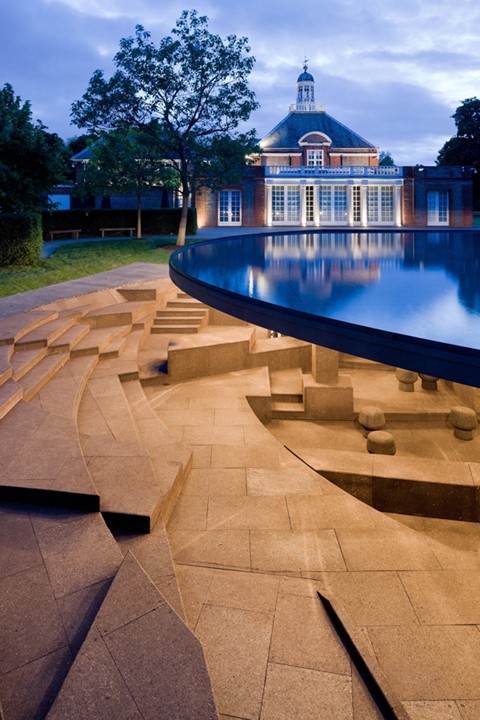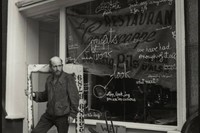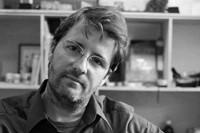Just as no man is an island, for Hans Ulrich Obrist, no one creative discipline works in isolation. “I have always believed that if you want to understand the forces that are effective in visual art...
Just as no man is an island, for Hans Ulrich Obrist, no single creative discipline works in isolation. “I have always believed that if you want to understand the forces that are effective in visual art, you need to look at music, cinema, dance, theatre, opera, architecture, science and everything else,” he says; and it is this untrammelled philosophy that has formed the basis of the Serpentine Gallery Marathon series. For the past seven years, Obrist has worked with the Serpentine and its director Julia Peyton-Jones, to curate an annual event that opens avenues of creative debate in the broadest possible arena. Each year there is a theme, and each year different practitioners, performers and activists in their fields descend on London’s Kensington Gardens to proclaim their Manifesto (2008), recite their poetry (2009), explain their map (2010), or, as will take place this weekend, discuss their view of memory. Ever enlightening, thought provoking and always unpredictable, the marathons have become a fundamental part of the London arts calendar, and in honour of the latest theme, we asked Obrist to look back at embryonic beginnings of the project, and tell us his favourite memories from the past seven years.
"My hero is one of the most amazing curators, the great Russian impresario Sergei Diaghilev, and the marathons are ultimately bound up with him. After his initial endeavours in art and portrait shows, Diaghilev became the founder of the Ballets Russes, and what he did was curate time and space – bringing together Nijinsky and Stravinsky and Picasso to form one ballet – in what was essentially a time based exhibition. So I suppose that’s the model. Diaghliev always said, “Etonne-moi”, “Surprise me”. For me, the "Etonne-moi" moment is definitely the key thing for the marathons.
"The "Etonne-moi" moment is definitely the key thing for the Marathons."
We found the formula for the first marathon in 2005 in Stuttgart and it worked. In 2006, together with Julia Peyton-Jones, Serpentine Gallery Director we presented the first Marathon in the Serpentine Gallery Pavilion, the annual architectural commission which directly inspires the theme of the Marathons each year.. It was the Interview Marathon, and everybody was very excited because it was like an open-air school, where people slept in the park and in the morning woke up and listened to things. Damien Hirst came at 4am, and Gilbert & George came at 6am for breakfast and each time amazing crowds gathered around them. Each speaker had a different crowd but they all overlapped, so some people came to see an artist but stayed for a scientist, and some came to see a scientist and so on. I think the only person who was there for 24 hours non-stop was Gustav Metzger. He arrived before us and when we left, he was still sitting there.
In 2007, Olafur Eliasson and I had spoken so much that we thought it would be interesting to do something more experimental – not just experimental talking, but experimental doing. So that led to the Experiment Marathon, the star of which was John Baldessari who came all the way from LA to transform a glass of water into a glass of wine into a glass of water and then went back to LA again. That was very powerful.
"John Baldessari came all the way from LA to transform a glass of water into a glass of wine into a glass of water and then went back to LA again."
The Manifesto Marathon in 2008 was filled with many unusual moments. K8 Hardy, the young artist from New York, started to completely take away all the security, she took all the fences away, the paths away... It was a ticketed event but she made it accessible to everyone, she changed the rules of the game. It was great. And we had Agnes Varda, the legendary French filmmaker, pioneer of the Nouvelle Vague, who, instead of doing a lecture, disguised herself as a potato, and talked about the Pata-utopia. Many people still talk about this.
This year, the Marathon is dedicated to the memory of the late historian Eric Hobsbawm, who was due to participate. He was a long standing supporter of the series, having taken part in both the Interview and the Manifesto marathons, and we recorded many interviews. At one of those sessions, in 2006, I asked him what advice he would give a young historian. He responded: "Be curious about the world around you and discover things about it that other historians haven’t done yet. There are always new things to discover. You will never run out of subject matter but you may well discover things about the past by looking at the present. I think that’s the main thing I would recommend them. Keep your eyes open."
The Serpentine Memory Marathon takes place 13-14 October, under the curatorial team consisting of Nicola Lees, Lucia Pietroiusti, Antonia Blocker, Stella Bottai, Claude Adjil and Tommy Reeves. To win tickets, tweet your first memory to @anothermagazine using the hashtag #memorymarathon. Click here for a full schedule of events.
Interview by Nancy Waters, intro by Tish Wrigley



